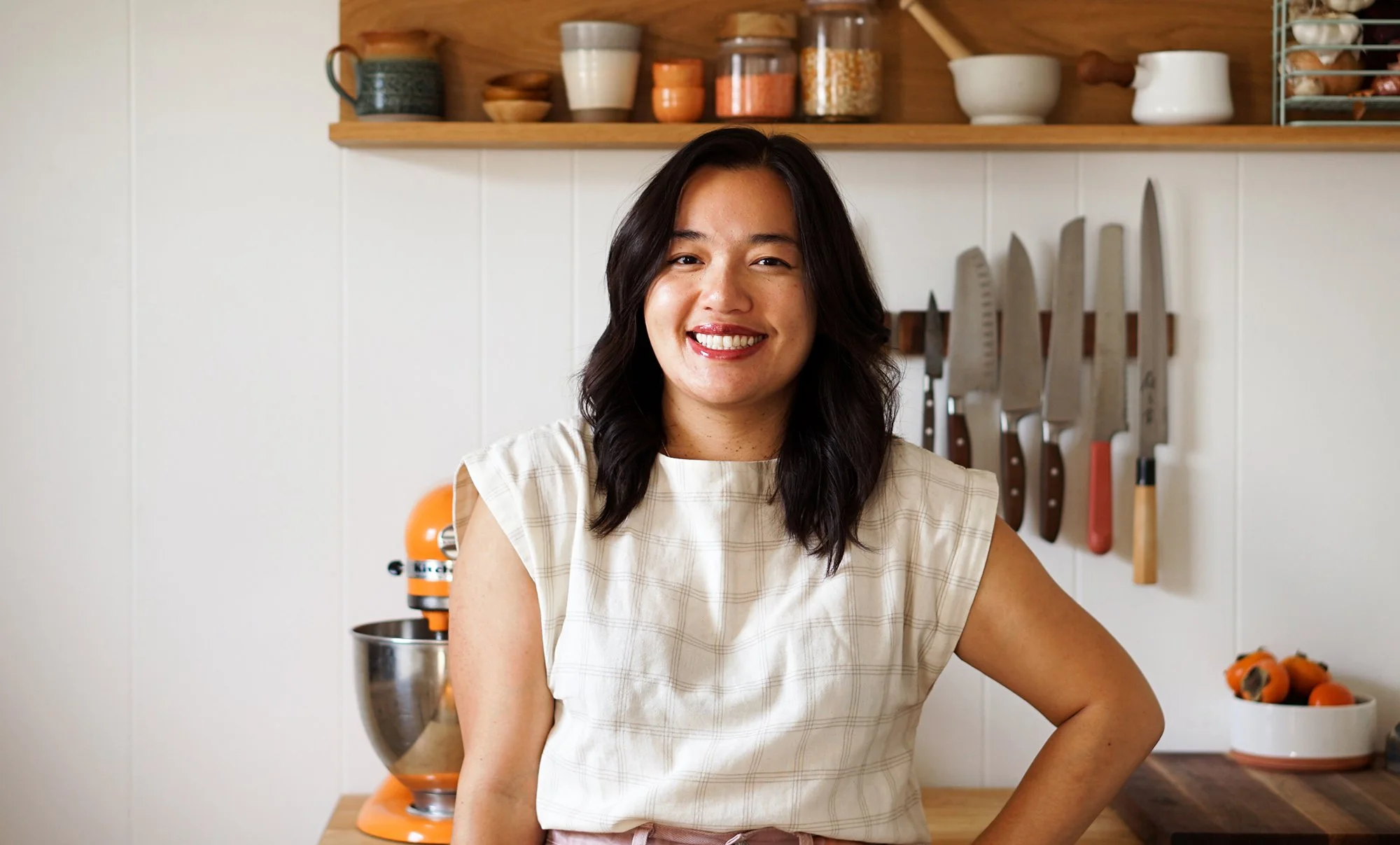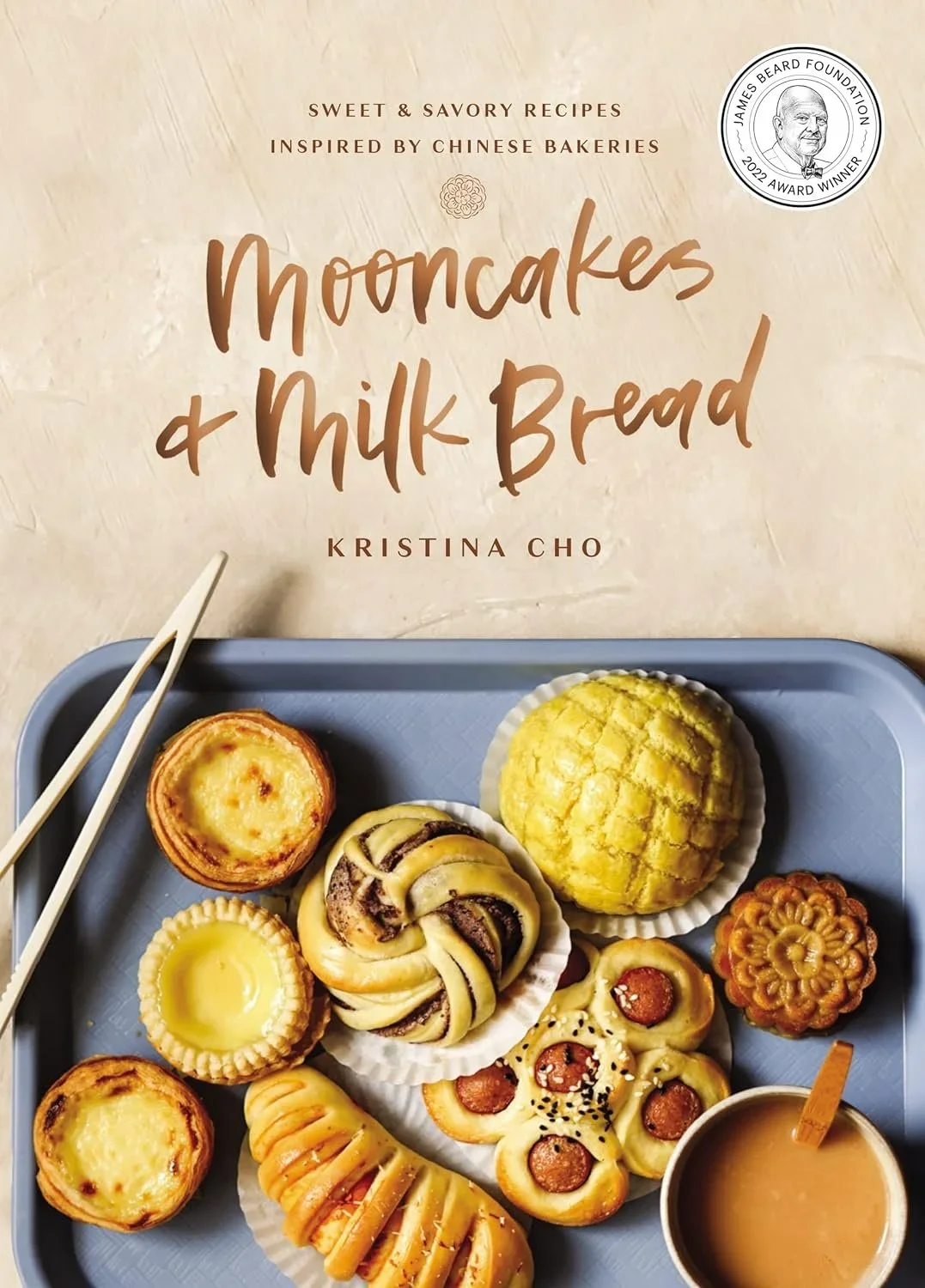How The Pandemic Turned Kristina Cho’s Cookbook Into An Ode To Chinatowns
Cho was in the midst of writing a cookbook when the pandemic struck. So she did what did with dough: she just rolled with it.
Kristina Cho. Supplied photo.
For a cookbook dedicated to Chinese baked goods, Kristina Cho’s collection of recipes often reads like a smorgasbord of love letters to her family and America’s Chinatowns.
Part of that was by design. The other part was by necessity. Writing a cookbook during a pandemic threw some unique challenges for the writer behind Mooncakes and Milk Bread: Sweet and Savory Recipes Inspired by Chinese Bakeries and the popular food blog, EatChoFood.com.
“I had an idea of what this book was gonna be like when I first started working on it. And it morphed quite a bit just by the constraints of the pandemic, but I think for the better,” said Cho from her current residence in San Fransico. “Working during the pandemic allowed me to have a little bit more focus and quiet to dig deep into like the meaning and the intentions that I wanted for this book. That’s why this book about Chinese baking is so much more than just baked goods.”
The original game plan for the book, as Cho puts it, was to travel with her mom to cities across the U.S. and visit Chinese bakeries like the ones she grew up visiting in her hometown of Cleveland.
“We were supposed to travel to [cities in] Arizona and Texas. We wanted to go to places that were on the same level as Cleveland to find those smaller, unique communities and see what the bakeries were like.”
But with pandemic health restrictions discouraging travel and her manuscript deadline inching closer and closer, Cho picked up the phone, scheduled some Zoom calls, and ended up speaking with the owners of four well-known Chinese bakeries: New York City’s Fay Da Bakery, San Francisco’s Eastern Bakery, Phoenix Bakery in Los Angeles, and Ray’s Cafe & Tea House in Philadelphia.
“Chinese baking is a really loved facet of Asian-American life, but it’s something that I think the general public doesn’t really know about, said Cho. “I wanted to emphasize how important these bakeries are to the communities. They are just as important as a dim sum hall that people go to in the mornings. It’s part of the routines of grandmas and grandpas and aunts and uncles, and even like little grandchildren on the weekends.”
By focusing on these bakeries, Cho found stories about humanity and resilience, like how Fung Chow Chan, one of the founders of Los Angeles’ Phoenix Bakery, also founded Cathay Bank and East-West Federal Savings, two of California’s oldest Chinese American financial institutions. Both were a response to the discrimination Chinese Americans faced at other banks back in the ‘60s.
Flash forward to 2020 and the sense of giving back was still alive and well as Chinese bakeries and restaurants faced back-to-back hardships: First with the initial wave of prejudice as the coronavirus landed in the U.S. and then with the closures and dining-capacity limitations brought on by pandemic restrictions.
And yet, these bakeries survived.
“They all stayed open as much as they could and are still doing fine now because of their customer bases,” said Cho.
“Chinese baking is a really loved facet of Asian-American life…[these bakeries] are just as important as a dim sum hall that people go to in the mornings. It’s part of the routines of grandmas and grandpas and aunts and uncles, and even like little grandchildren on the weekends.”
The pandemic also forced Cho to adapt many of her recipes, eschewing some of her more over-the-top ideas, like recipes that called for yuzu, for more accessible ingredients like a parmesan and sambal oelek bun. The tweaks not only resulted in what she calls a more cookable bake book but one that reflects her duality of growing up Chinese-American.
“You’re still using the techniques that you would learn from a Chinese bakery,” said Cho about the milk bread dough and folds that form the basis of the bun. “That recipe, in particular, is a great blend you can make without having to pre-make anything. You can just buy sambal, which is so easy to find out at like any grocery store, and Parmesan cheese.”
“I think that kind of speaks to like the Americanness, you know, like finding something that’s like readily available and still being really delicious.”
If there are any personal takeaways from Cho’s book, perhaps it’s that you don’t have to choose between one or the other, be it sweet or savoury. Or Asian vs. American. You can learn to embrace both, though Cho says her journey is still a work in progress.
“This theme of duality has been part of my life since I was born and I would imagine that a lot of Asian Americans probably feel that way too. I am an American and I want to embrace that side of me, but then I’m also Asian. I’m also Chinese. I almost felt like writing this book, was in a way, very therapeutic for me to try to resolve that.”
Mooncakes and Milk Bread: Sweet and Savory Recipes Inspired by Chinese Bakeries is available for purchase at your local bookstore.


